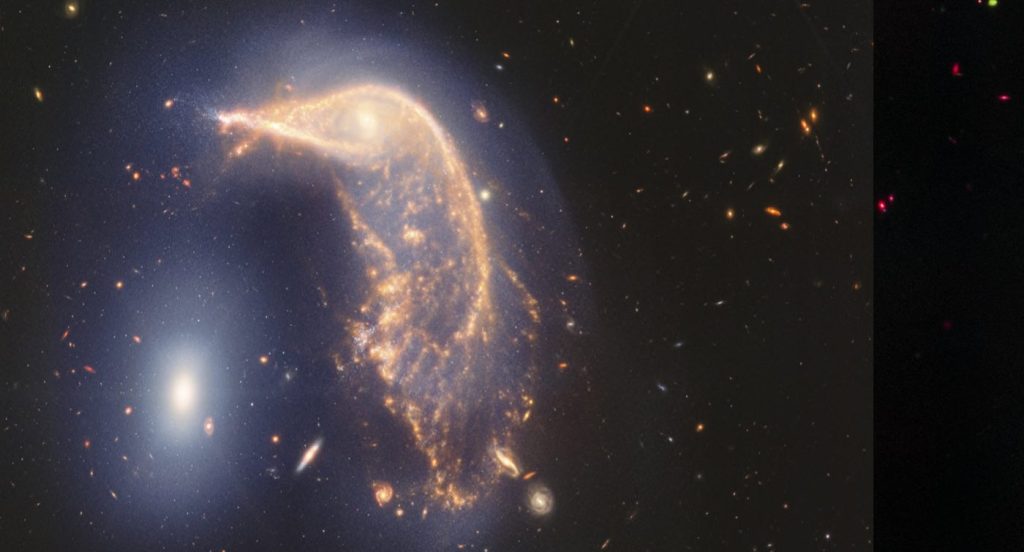A space penguin glowing in space next to an egg marks the second anniversary of the James Webb Space Telescope.
The two interacting galaxies mark a NASA spacecraft specializing in capturing infrared light that is invisible to our eyes.
Webb’s images show these galaxies, collectively known as Arp 142, performing a “slow cosmic dance.”
European Space Agency Explain it Here it is: “Before we first approached the penguin, it was spiral-shaped. Today, its galactic center shines like an eye, and its unraveling arms take the shape of a beak, head, spine, and fanned-out tail.”
Like other spiral galaxies, the Penguin Galaxy is rich in gas and dust. The interaction between the two galaxies causes the Penguin’s thinner layers of gas and dust to gravitationally pull together, colliding in waves and forming stars. Look for these regions in two places: the fish-like part of its beak, and the feathers in its tail.
“In contrast, the Egg Galaxy’s compact shape has changed very little. As an elliptical galaxy, it is filled with old stars and has much less gas and dust pulled apart to form new stars.”
Mark your calendars: Two meteor showers will peak in the same sky on the same night later this month
Launched two years ago, the space telescope is constantly observing the universe, capturing incredibly detailed data called images and spectra, which result in eye-catching images like this one.
Webb’s observations, which combine near- and mid-infrared light from two infrared cameras, clearly show that the stars and gas are joined by a blue haze that results from their intermingling.
NASA explained that their ongoing interaction began between 25 and 75 million years ago, when the penguin (known as NGC 2936) and the egg (NGC 2937) first met and completed a long waddling journey before finally joining together.
“They will keep swinging around, complete a few more loops, and merge into a single galaxy in a few hundred million years.”
Webb’s Wonder: The oldest and most distant galaxy discovered by the Webb Telescope dates back 300 million years after the Big Bang
NASA Administrator Bill Nelson has praised the telescope.
“Since President Biden and Vice President Harris unveiled the first images from the James Webb Space Telescope two years ago, Webb has continued to unlock the mysteries of the universe.
“Webb’s capabilities have provided incredible images from every corner of the universe, stretching back almost to ancient times, shedding new light on our celestial environment and inspiring the next generation of scientists, astronomers and explorers.”
“In just two years, Webb has transformed our view of the universe and enabled the world-class science that drove NASA to make this mission a reality,” said Mark Crumpen, NASA’s astrophysics division director.
See what he found: Man sees green light in sky and discovers meteorite: hot and burning, ‘may be from Halley’s Comet’
“Webb is providing insight into long-standing mysteries about the early universe and launching a new era of studying distant worlds, sending back inspiring images for people around the world and raising exciting new questions to answer.
“Exploring every aspect of the universe is now possible like never before.”
Share Celestial Penguin with stargazing enthusiasts on social media…


